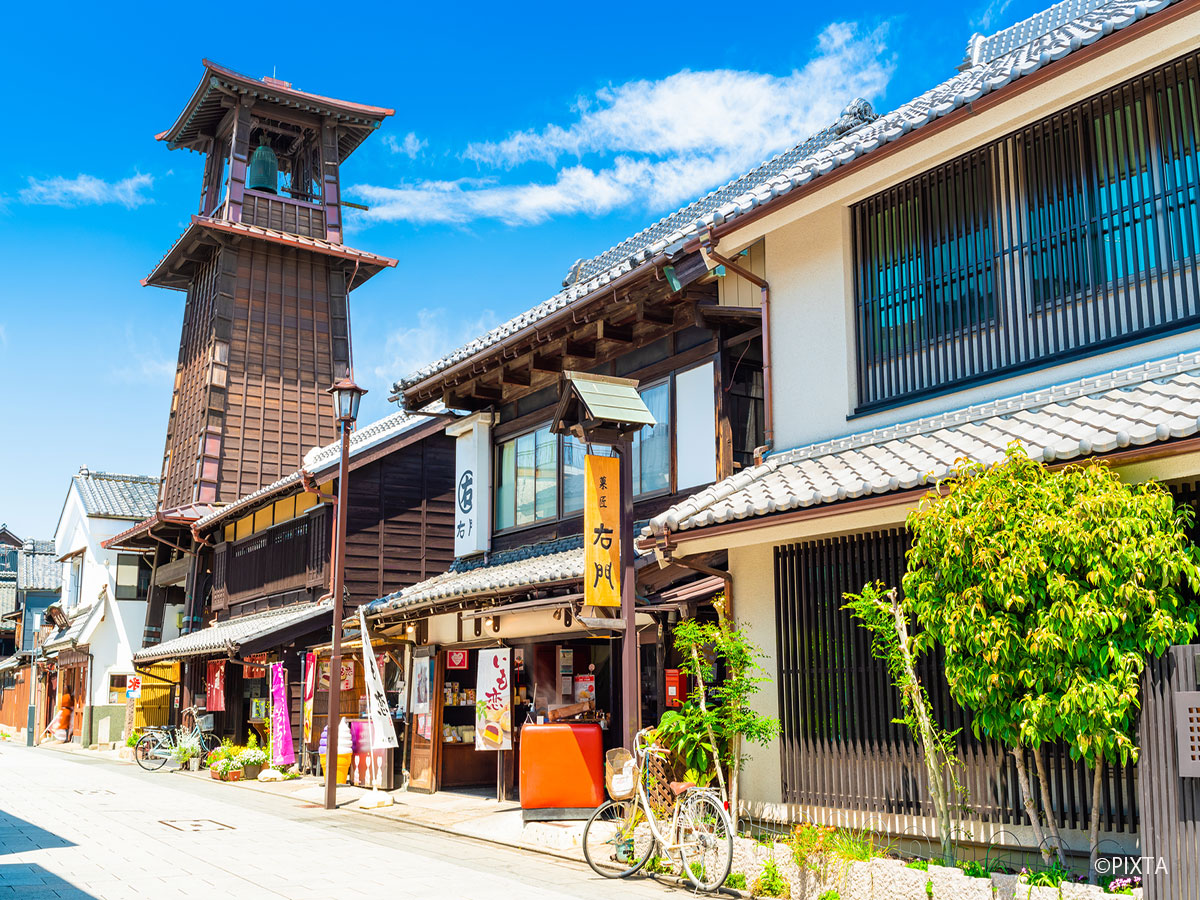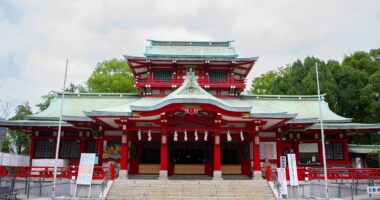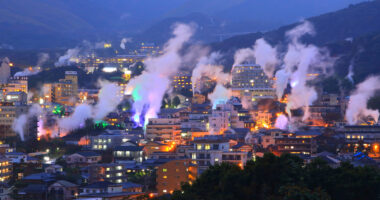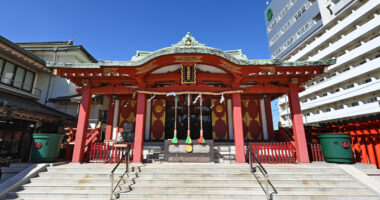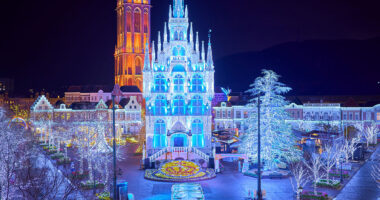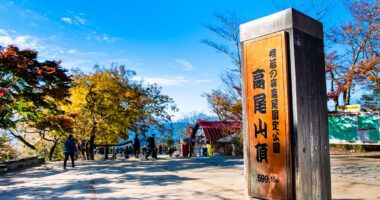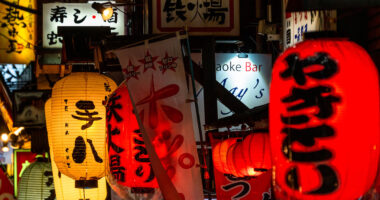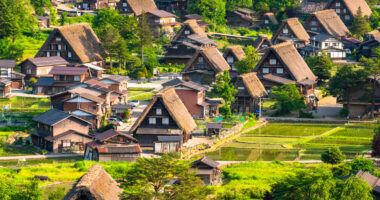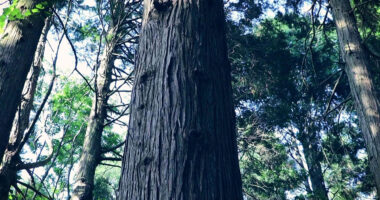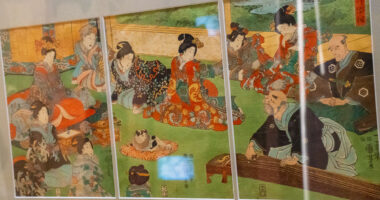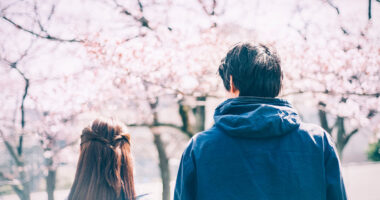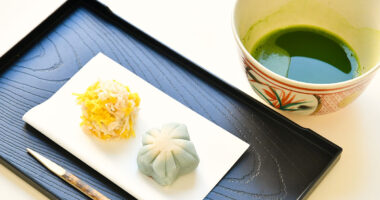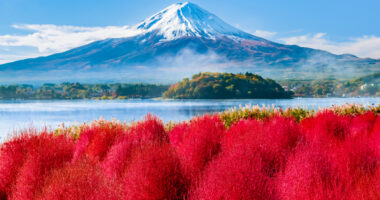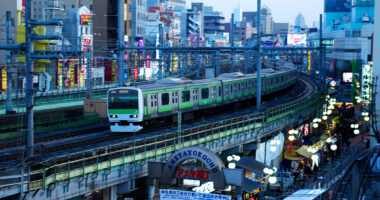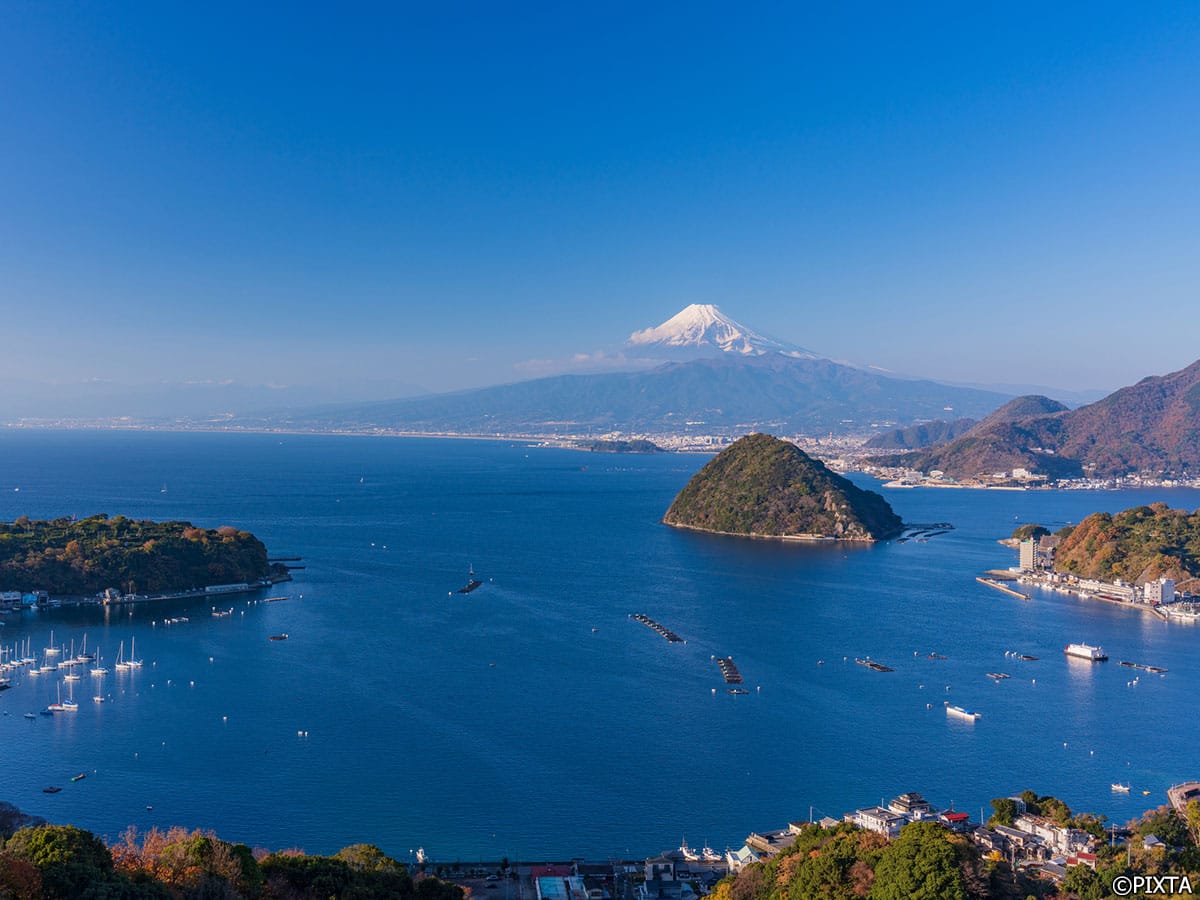A city that once experienced the horrors of the atomic bomb, 広島 Hiroshima has risen from the ashes and transformed itself into a vibrant, modern metropolis. Today, it stands as a symbol of peace, hope, and resilience, offering visitors a unique blend of history, culture, natural beauty, and mouthwatering cuisine. As you explore its charming streets and famous landmarks, you’ll witness the city’s remarkable journey of recovery and rebirth.
Access
Hiroshima is easily accessible via the Sanyo Shinkansen line. The nearest station is Hiroshima Station, which is approximately 4 hours from Tokyo Station. From the station, many of Hiroshima’s main attractions are within walking distance or accessible by public transportation. To get there faster, you can hop on a plane from Tokyo, which takes about 80 minutes.
Food and Drink
If you’re feeling hungry in Hiroshima, you’re in luck. The city offers diverse and delectable local cuisine, which ranges from savory pancakes to fresh seafood dishes. The city takes pride in its culinary offerings, each dish showcasing the region’s unique flavors and ingredients.
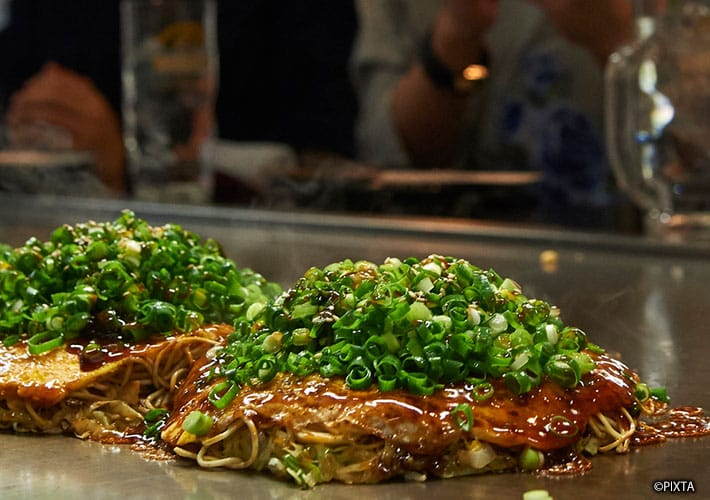
Mouthwatering Hiroshima-style okonomiyaki.
Hiroshima-style okonomiyaki: お好み焼き Okonomiyaki is a savory Japanese pancake made with various ingredients such as cabbage, meat, and seafood. The Hiroshima style, otherwise known as 広島焼きHiroshimayaki distinguishes itself by layering the ingredients instead of mixing them into the batter like the more common Kansai style. It also includes the addition of noodles, giving it a more filling texture. Cooked on a hot griddle and served with a delectable sauce, Hiroshima-style okonomiyaki is a flavorful and unique dish you shouldn’t miss.
Oysters: Another popular local delicacy, Hiroshima’s oysters are known for their freshness and succulent taste. The city’s proximity to the Seto Inland Sea provides an abundance of these delicious shellfish. Enjoy them raw, grilled, or in a variety of dishes like oyster hot pot or oyster tempura.

Grilled Hiroshima oysters from a street stand.
Anago: Hiroshima’s 穴子 anago (saltwater eel) is known for its tender texture and subtle flavor. Try it grilled or served over rice in a dish called あなご飯 anago-meshi.
Onomichi Ramen: While visiting nearby 尾道 Onomichi, don’t miss out on their famous ramen, characterized by its soy sauce-based broth and tender, thin noodles.
Shopping
Hiroshima offers great shopping opportunities. Visitors can find a mix of local souvenirs, traditional crafts, and international brands in the city’s shopping districts.
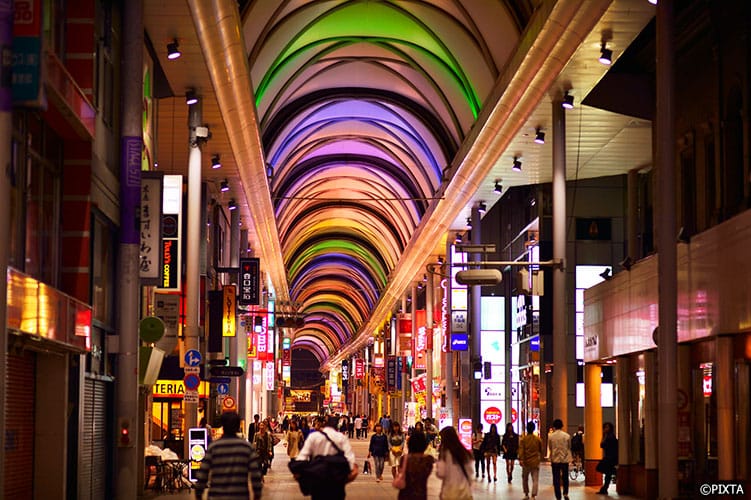
Experience shopping at the lively Hondori Shopping Arcade.
本通商店街 hondōri shōtengai Hondori Shopping Arcade: This popular shopping area features a mix of local and international brands, as well as stores selling unique Hiroshima souvenirs like Miyajima woodcarvings and traditional sweets.
もみじ饅頭 Momiji Manjū: These maple leaf-shaped sweets, filled with sweet bean paste, are a popular souvenir from Hiroshima. They come in various flavors and make for a delightful treat.

Maple leaf-shaped Momiji Manju are a popular gift from Hiroshima.
宮島表参道商店街 miyajima omotesandō shōtengai Miyajima Omotesando Shopping Street: Located on the picturesque island of Miyajima about 30 minutes from Hiroshima, this lively shopping street offers a wide range of local products, souvenirs, and snacks.
Sightseeing and Activities
Hiroshima is a treasure trove of historic landmarks, natural wonders, and memorable experiences. Here are some of the most notable sightseeing spots and activities to consider.
Hiroshima Peace Memorial Park: This important location commemorates the victims of the atomic bombing and promotes the message of world peace. The park houses the iconic A-Bomb Dome, the Hiroshima Peace Memorial Museum, and the Children’s Peace Monument.

The iconic A-Bomb Dome in Hiroshima Peace Memorial Park
厳島神社 itsukushima jinja Itsukushima Shrine (Miyajima): A short ferry ride from Hiroshima, this UNESCO World Heritage Site is known for its “floating” torii gate and serene atmosphere. The island, known formally as Itsukushima and more commonly as Miyajima, is also famous for its picturesque walking trails and the population of local deer who roam free. When planning your visit to Miyajima, make sure to check the tide times in advance. The torii gate is most impressive during high tide, but at low tide, you can walk right up to it, offering a unique experience as well.
縮景園 Shukkeien Garden: A tranquil oasis in the heart of the city, Shukkeien Garden offers a serene escape from the hustle and bustle of Hiroshima. This traditional Japanese garden features beautifully landscaped grounds and is the perfect spot for relaxation and contemplation.
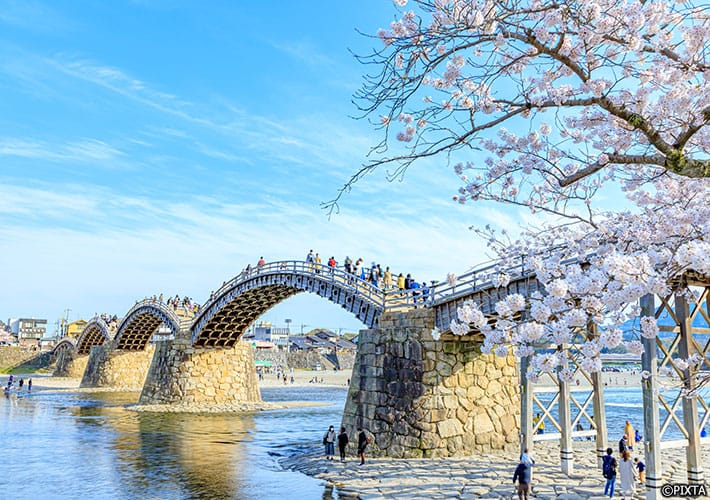
The beautiful arches of the Kintai Bridge in Spring.
岩国 Iwakuni: Less than 40 minutes away on the Shinkansen, the charming town of Iwakuni in neighboring Yamaguchi Prefecture is famous for its 錦帯橋 Kintai Bridge and well-preserved samurai residences. Take a leisurely stroll through its historic streets and soak in the atmosphere of old Japan.
尾道 Onomichi: Less than an hour’s train ride from Hiroshima, the picturesque port town of Onomichi is known for its historic temples, narrow streets, and delicious ramen. Wander through its enchanting alleyways, and discover the cultural and culinary gems hidden within.
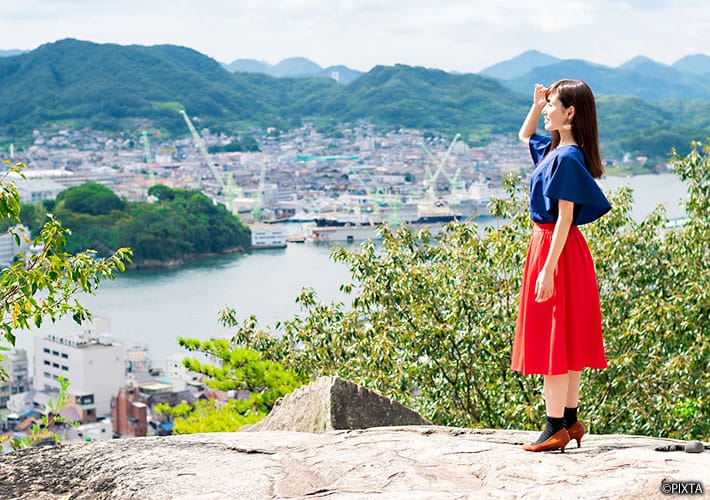
Enjoying the scenic view in Onomichi.
In summary, from its poignant history to its captivating sights and flavors, Hiroshima offers an unforgettable experience for visitors. As you explore this resilient city, you’ll be inspired by its remarkable journey of rebirth and transformation. Whether it’s uncovering the rich history, indulging in the local cuisine, or venturing out to nearby destinations, Hiroshima is a travel experience that will leave a lasting impression in your heart.

